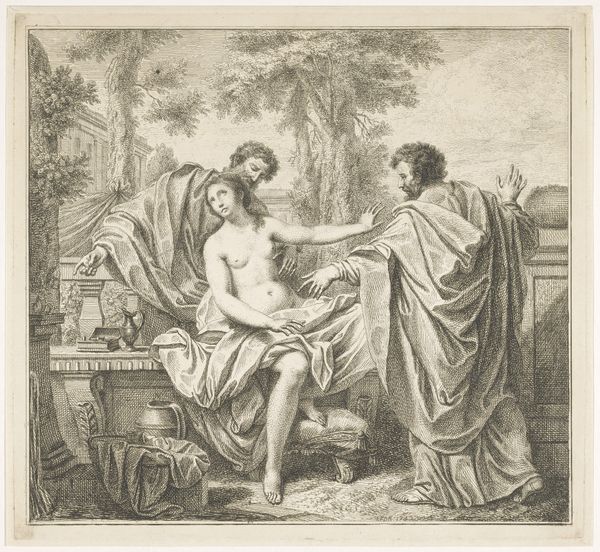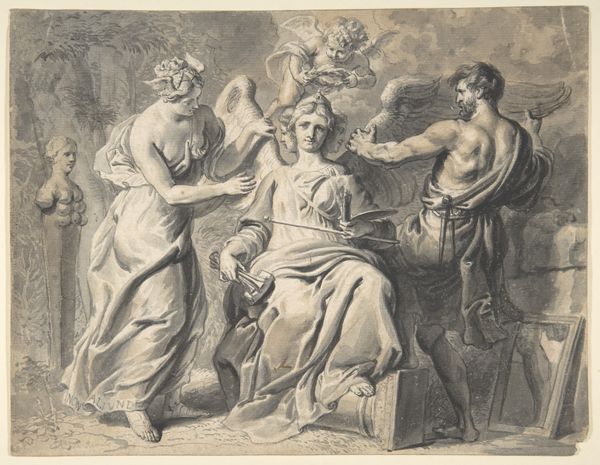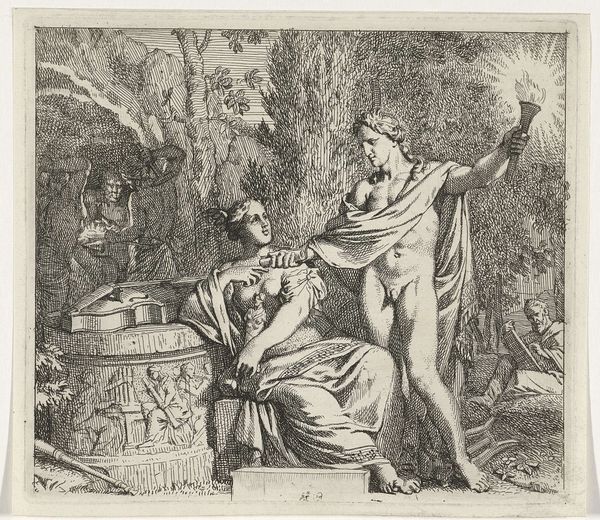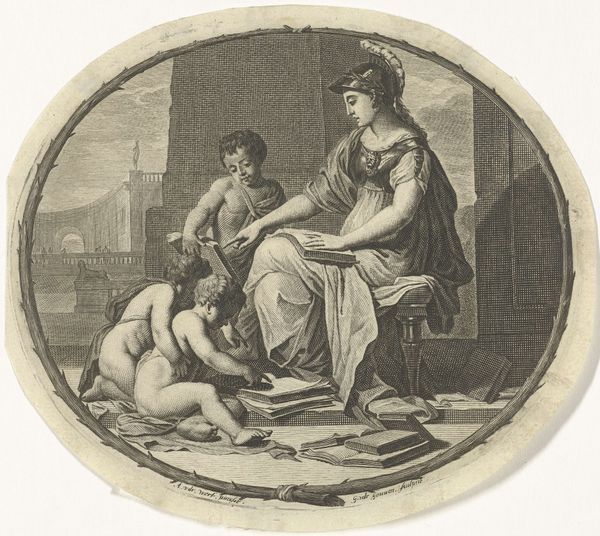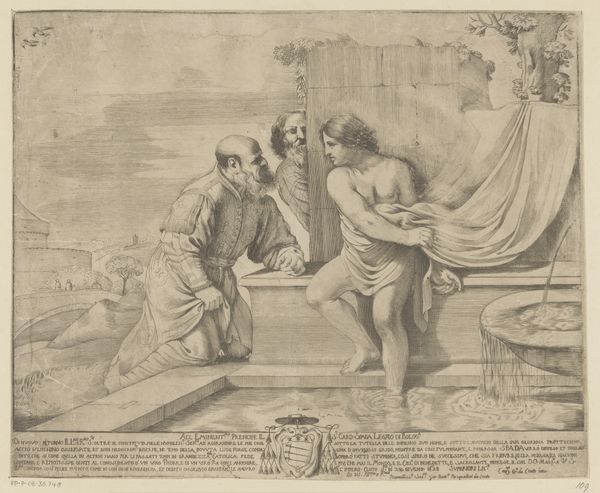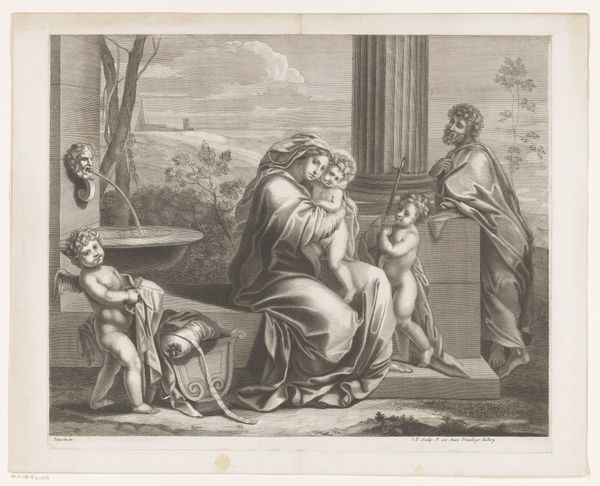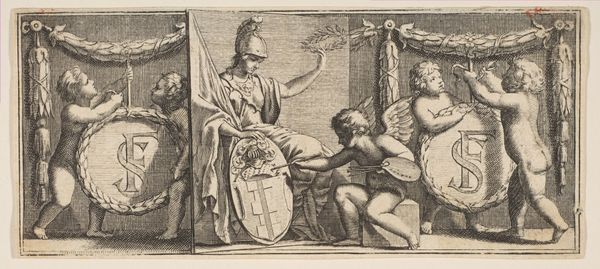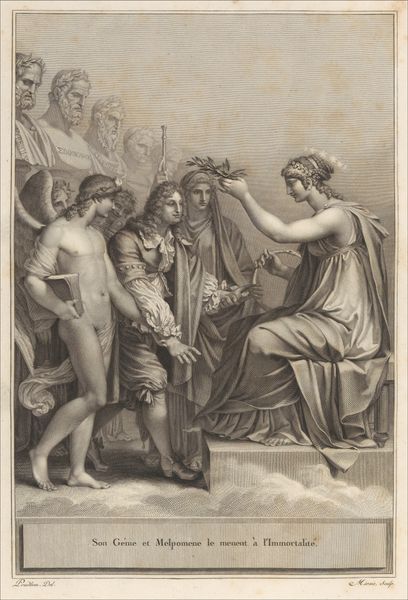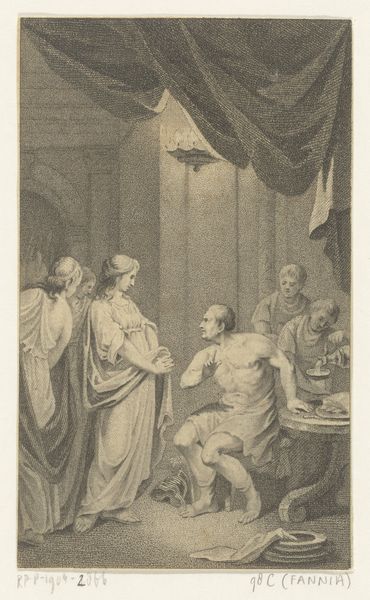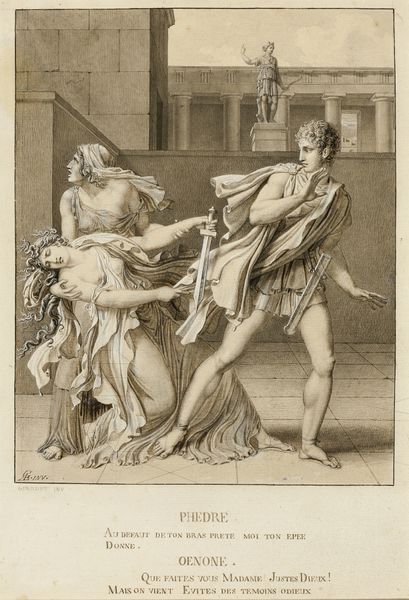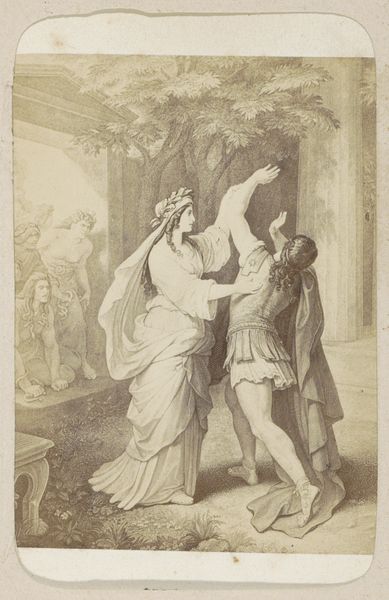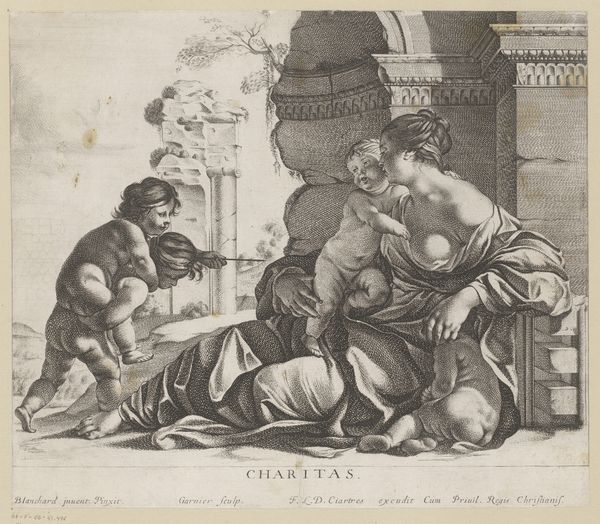
drawing, print, paper, graphite
#
portrait
#
drawing
#
neoclacissism
# print
#
figuration
#
paper
#
graphite
#
history-painting
Dimensions: sheet: 15 5/8 x 21 1/16 in. (39.7 x 53.5 cm)
Copyright: Public Domain
Curator: This is "Marius at Minturnae," an 1812 drawing by Jean Germain Drouais currently residing at The Met. The medium used is graphite on paper. Editor: Immediately striking is the contrast in textures and tonal values that lend a somber gravity to this historical scene. Graphite so skillfully employed creates incredible gradations from dark shadow to subtle highlights, all resting on what appears to be standard weight paper. It is more like a carefully composed performance than a quick study. Curator: It's a neoclassical representation, situating the viewer within a tense moment of Roman history. We see Marius, the once-powerful general, now exiled and cornered, confronting a would-be assassin sent to end his life. Notice the figure's body language; a clear class struggle plays out. Marius, even in defeat, possesses a bearing that commands a space occupied only moments before by potential violence, yet remains trapped within social conventions dictated to him through another’s poverty. Editor: I am interested in how the production itself speaks to this conflict. Consider the artist’s use of readily accessible materials: graphite and paper. What does that say about artistic choices? Perhaps Drouais chose this seemingly “humble” media as a political statement, suggesting solidarity between common man struggles or to illustrate the cost of revolution? And did paper become available to many artists through global trading channels during colonialism? Were colonial economic networks thus directly or indirectly contributing to the artwork? Curator: You're right; one must consider the cultural availability of artistic resources during that era, their channels of trade and accessibility to the general public, especially when interpreting historical subject matter through class struggles that remain just as pervasive today. This choice emphasizes a certain level of artistic accessibility perhaps lacking from works produced in precious metals available only to noble figures, as well as highlighting neoclassical artistic sensibilities towards accessible subjects, which gained traction amongst the working class, thereby making a case that art remains both universal, as well as intrinsic to the ongoing struggles present during Marius's lifetime. Editor: Ultimately, Drouais, via neoclassical artistic channels that romanticized Roman subjects to both illustrate classical artistic genius, while underscoring the sociopolitical values associated with global access to supplies, enables modern society to ponder both material supply channels and ideological consequences across numerous periods in world history, including colonialism. Curator: Right, its materiality serves as a silent but potent testament. The art lies in not merely depicting history, but doing so by mirroring its societal elements through creation channels; it opens the door to analyzing production within historical contexts in order to better understand modern challenges of income inequality. Editor: Indeed, a dialogue between medium and message which I won't soon forget.
Comments
No comments
Be the first to comment and join the conversation on the ultimate creative platform.
